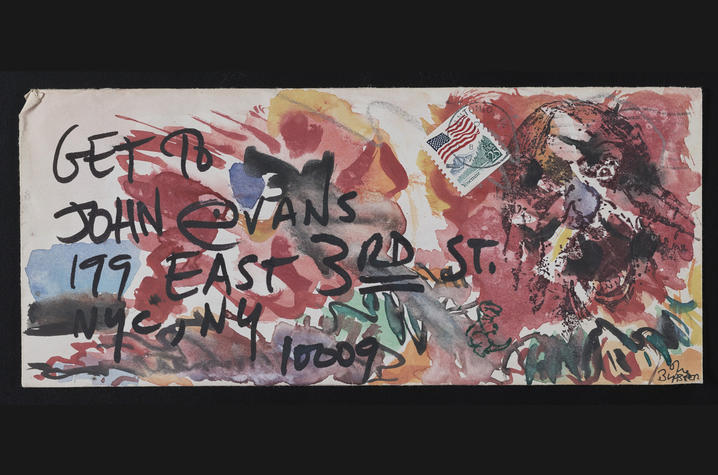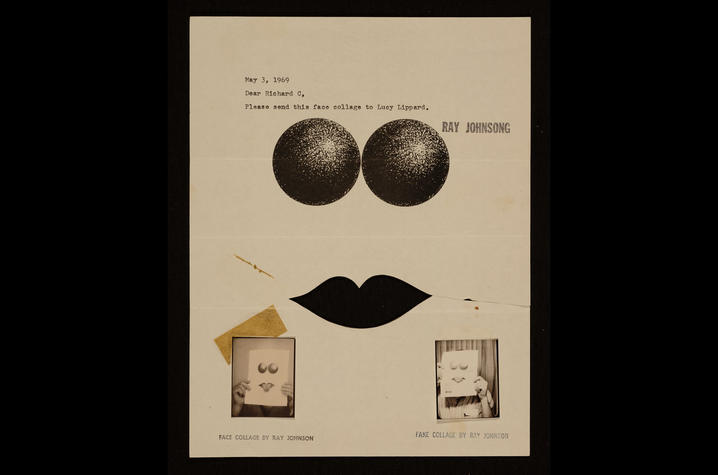Smithsonian Mail Art Exhibit Created by UK Professor Enjoys Online Popularity in Pandemic
LEXINGTON, Ky. (May 21, 2020) — An exhibition curated by Miriam Kienle, an assistant professor of contemporary art history at the University of Kentucky School of Art and Visual Studies, is enjoying virtual popularity during the coronavirus pandemic. "Pushing the Envelope: Mail Art from the Archives of American Art," a fall 2018 show documenting the international mail art movement with items from the collections at the Archives of American Art, Smithsonian Institution, (the Archives) has drawn both views and a review online almost two years after its opening in Washington, D.C.
The Archives’ online web presence for “Pushing the Envelope” is getting high traffic and recently drew attention from Johanna Fateman in The New Yorker’s “Goings on About Town,” who described Kienle’s assemblage as “winningly curated.”
“Pushing the Envelope” features postcards, letters and packages that tested the limits of what could be posted. Beginning in the 1960s, mail art (also known as “correspondence art” or “postal art”) emerged as a form of artistic practice in which an international network of participants used the mail to make art and share it with others. Mail artists circumvented traditional, elite modes of display and distribution — such as museums and commercial galleries — in favor of the more accessible space of the modern postal system.
The exhibition surveys the diversity and depth of mail art-making internationally — including postal art pioneers and lesser-known practitioners — and reveals the interconnected nature of the Archives’ holdings. Among the artists featured in the show are Carl Andre, John Baldessari, Anna Banana, Jay DeFeo, John Held Jr., General Idea, Ry Nikonova, Elizabeth Pearl, Ray Johnson, Carol Schneck and Richard Tuttle.
Utilizing the commonness and connectiveness of postal networks, practitioners of mail art questioned the inequities of the global art market and national regulations regarding culture and communications, creatively sidestepping the art market and, in many instances, eluding government censors. Examining how mail art has worked across divergent cultural circumstances — from McCarthy-era America, to Soviet Poland, to Chile under the dictatorship of Augusto Pinochet — the exhibition invites viewers to consider issues regarding circulation, collaboration, and community among artists in and among specific national contexts.
Kienle developed “Pushing the Envelope” in conjunction with UK students in a special topics seminar on the international mail art movement. Wildcats offered feedback on works selected for the show and even wrote some exhibition’s labels.
After its initial run in the nation’s capital, “Pushing the Envelope” traveled to the UK Art Museum to exhibit in spring of 2019. Interestingly, the show was delayed in its arrival at UK as an unforeseen consequence of a federal government shutdown, but eventually went on display for months on campus. Now, it is enjoying its new virtual popularity during the COVID-19 pandemic when artists are again being pushed to find new ways to create and display their work with the world as people remain healthy at home.
Founded in 1954, the Archives of American Art fosters advanced research through the accumulation and dissemination of primary sources, unequaled in historical depth and breadth, that document more than 200 years of the nation’s artists and art communities. The Archives provides access to these materials through its exhibitions and publications, including the Archives of American Art Journal. An international leader in the digitizing of archival collections, the Archives also makes nearly 2.5 million digital images freely available online.
The UK School of Art and Visual Studies, part of the College of Fine Arts, offers undergraduate and graduate degrees in the fields of art studio, art history and visual studies, art education, curatorial studies and digital media design.
As the state’s flagship, land-grant institution, the University of Kentucky exists to advance the Commonwealth. We do that by preparing the next generation of leaders — placing students at the heart of everything we do — and transforming the lives of Kentuckians through education, research and creative work, service and health care. We pride ourselves on being a catalyst for breakthroughs and a force for healing, a place where ingenuity unfolds. It's all made possible by our people — visionaries, disruptors and pioneers — who make up 200 academic programs, a $476.5 million research and development enterprise and a world-class medical center, all on one campus.






